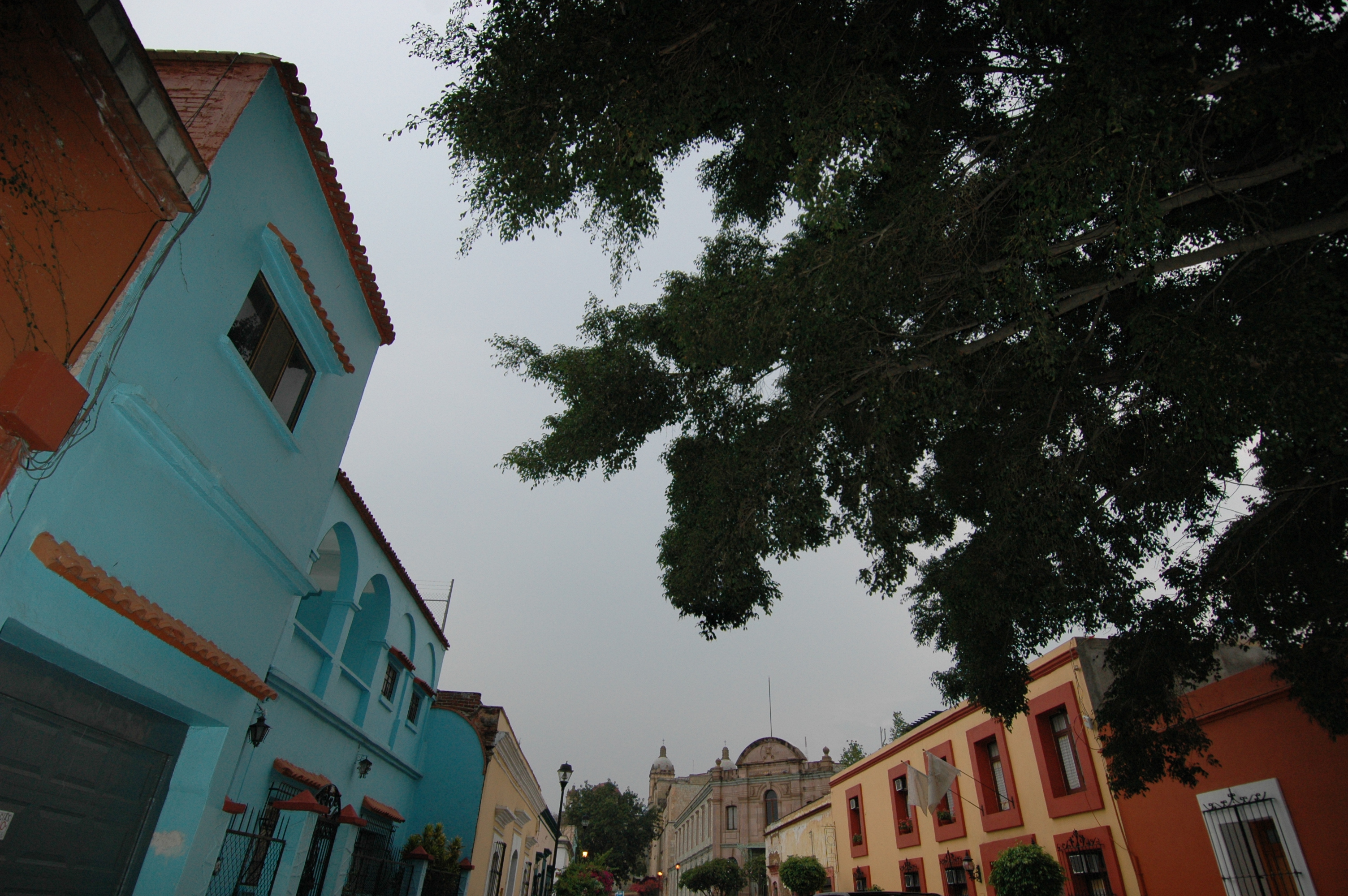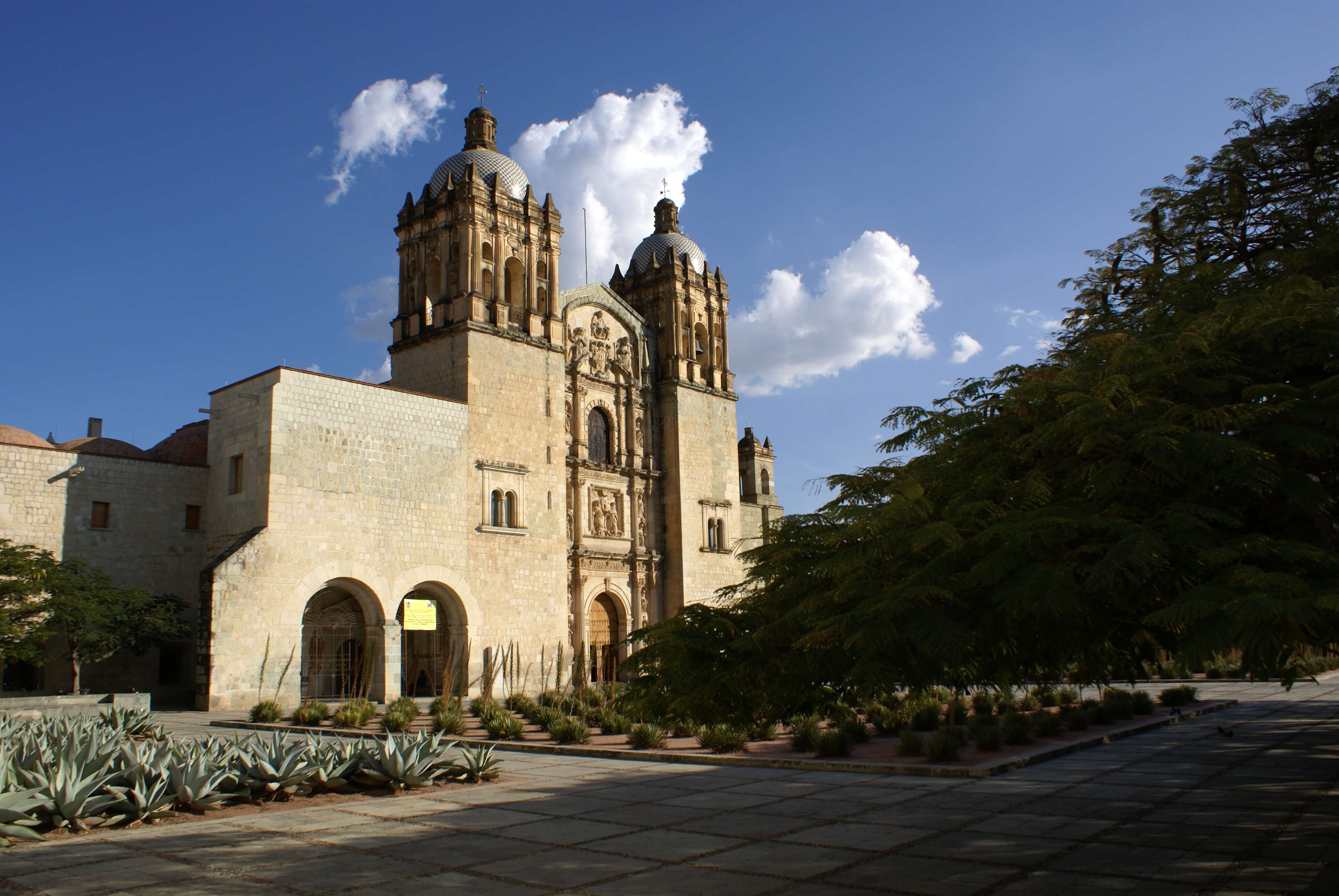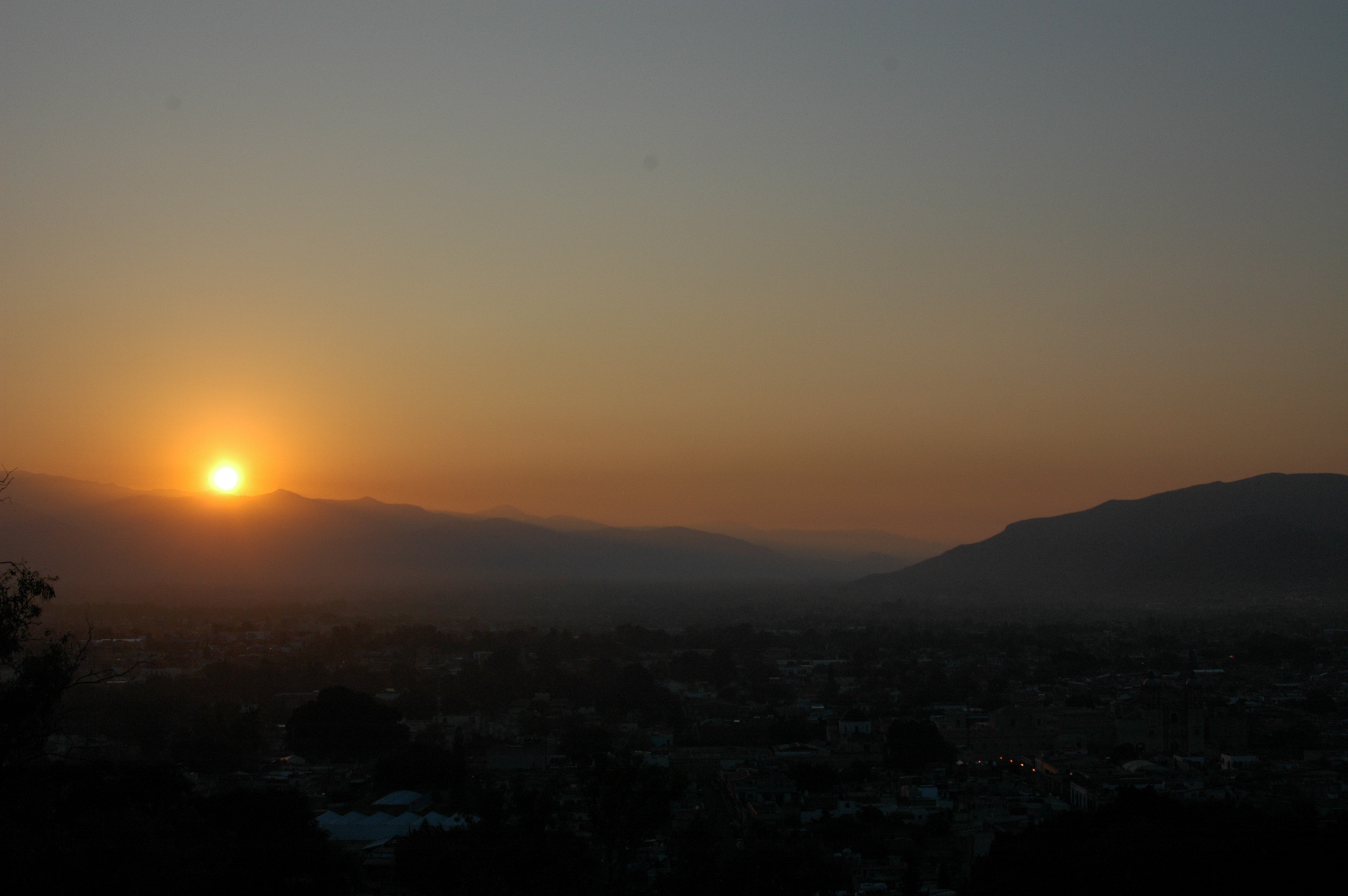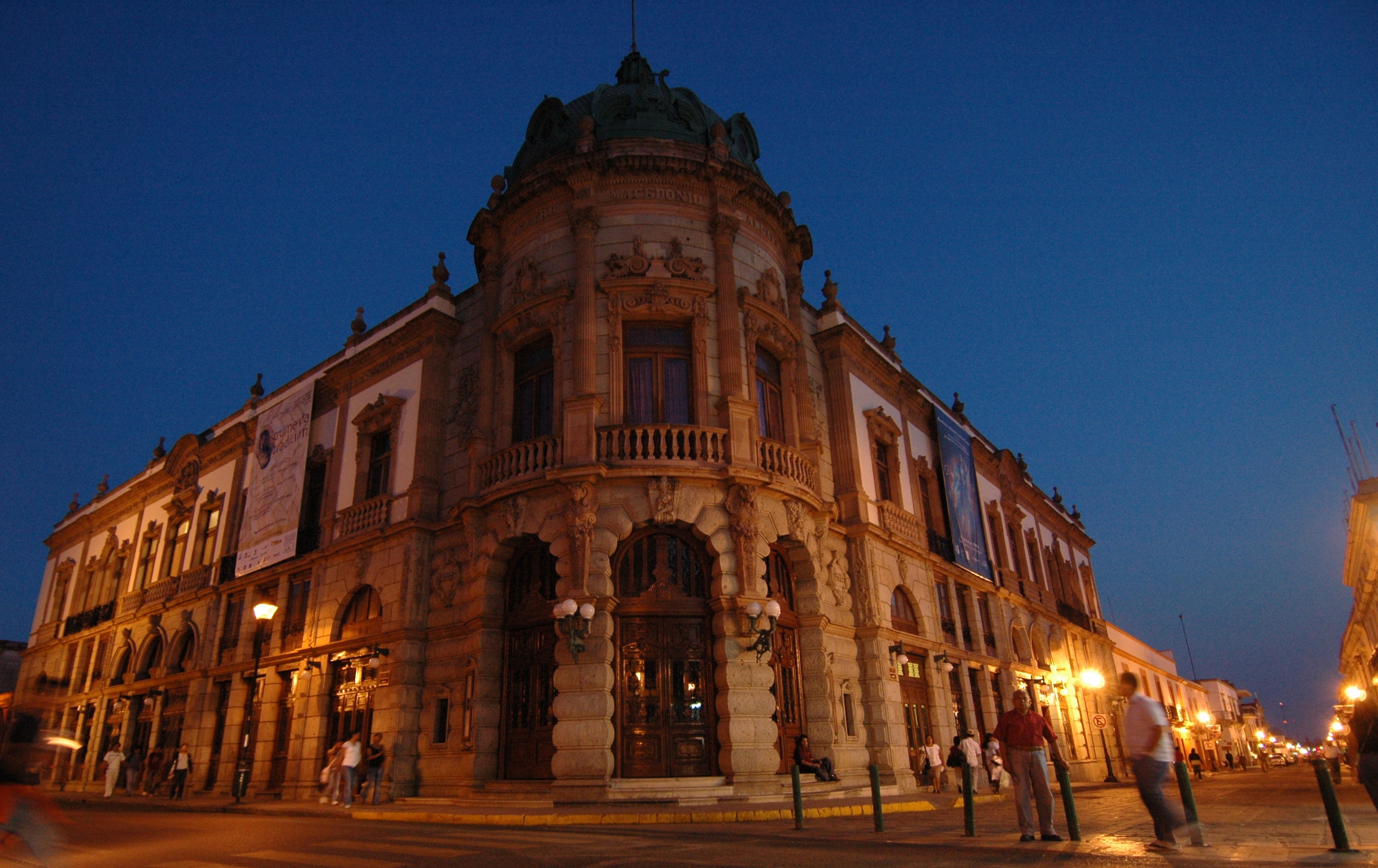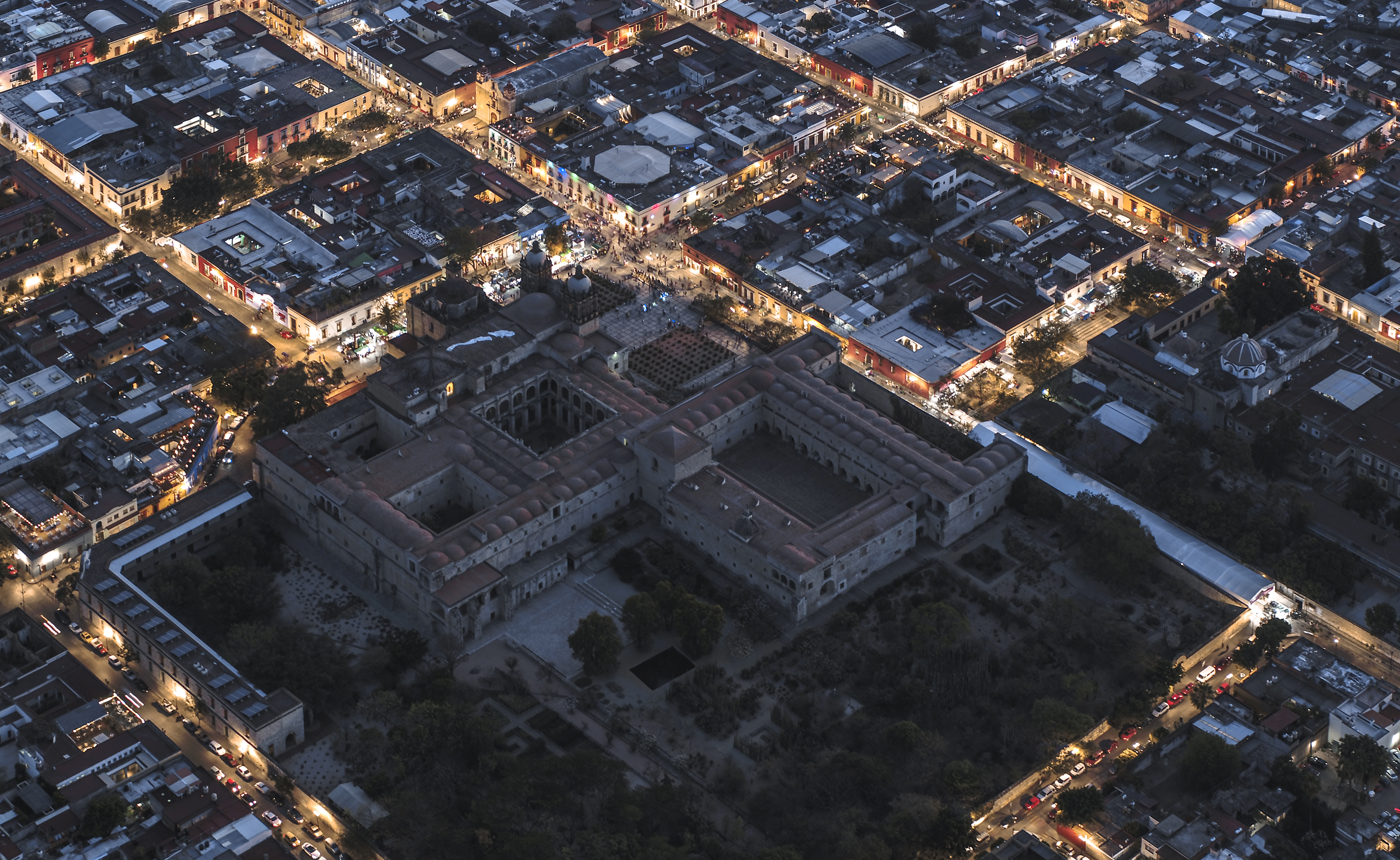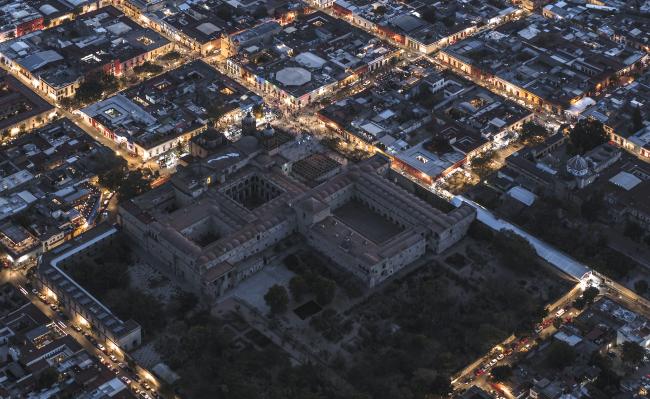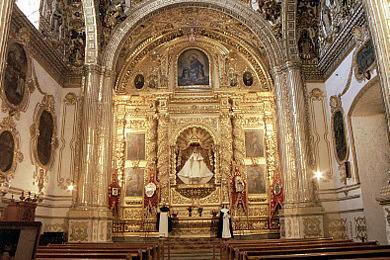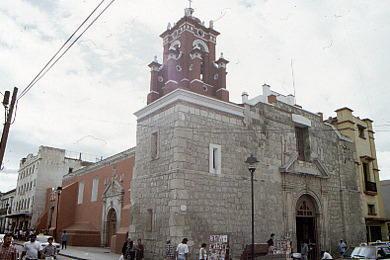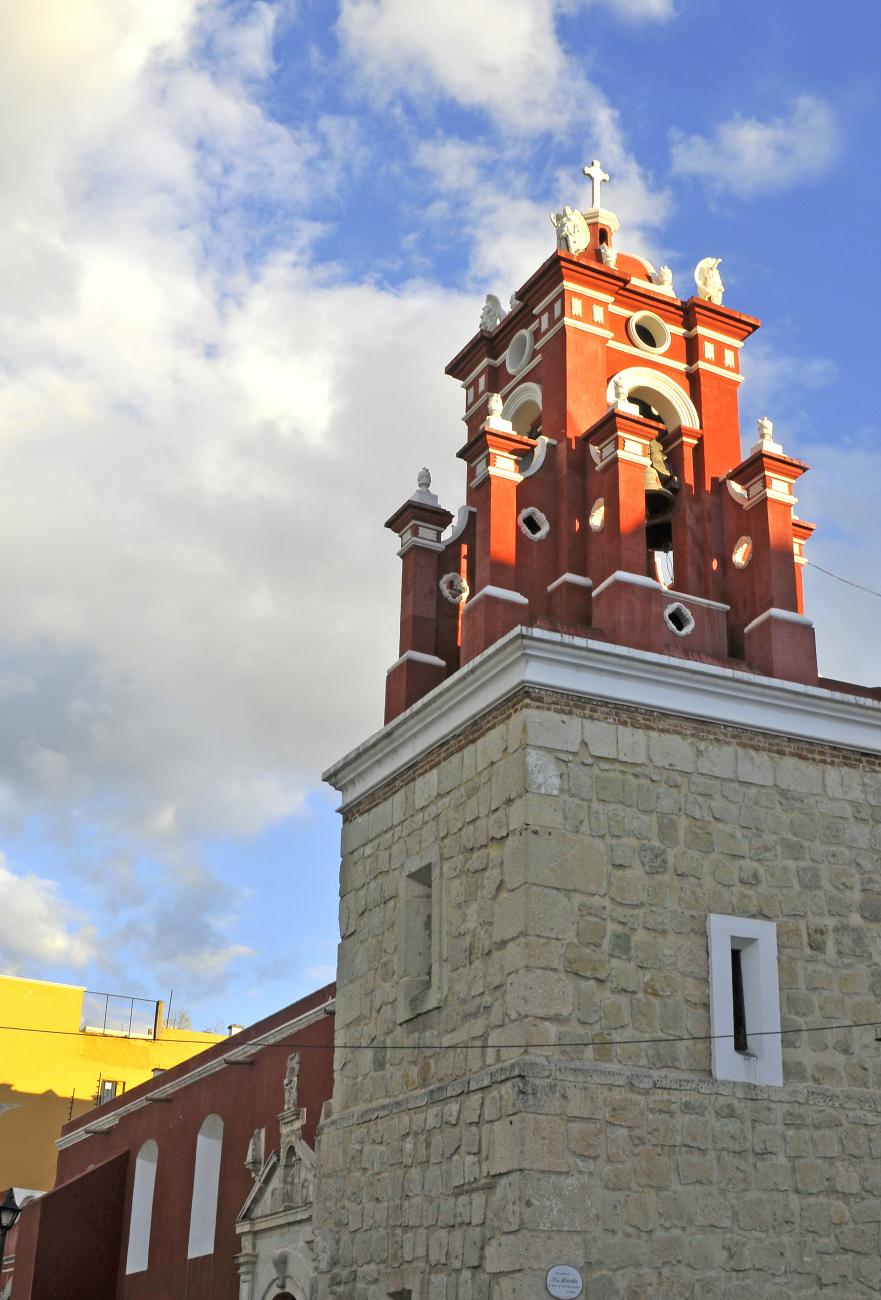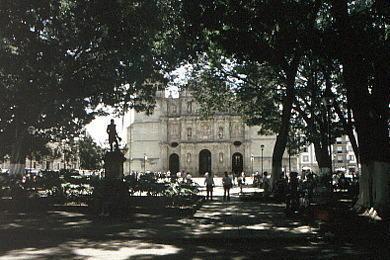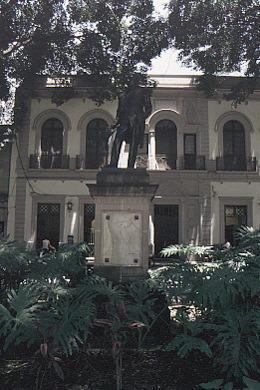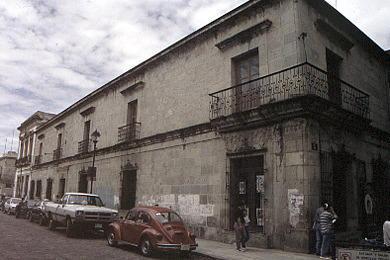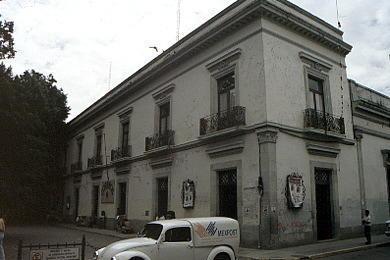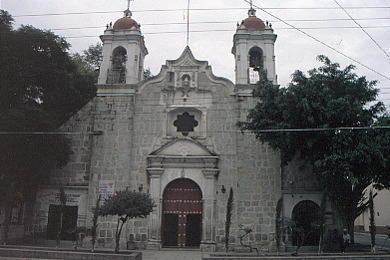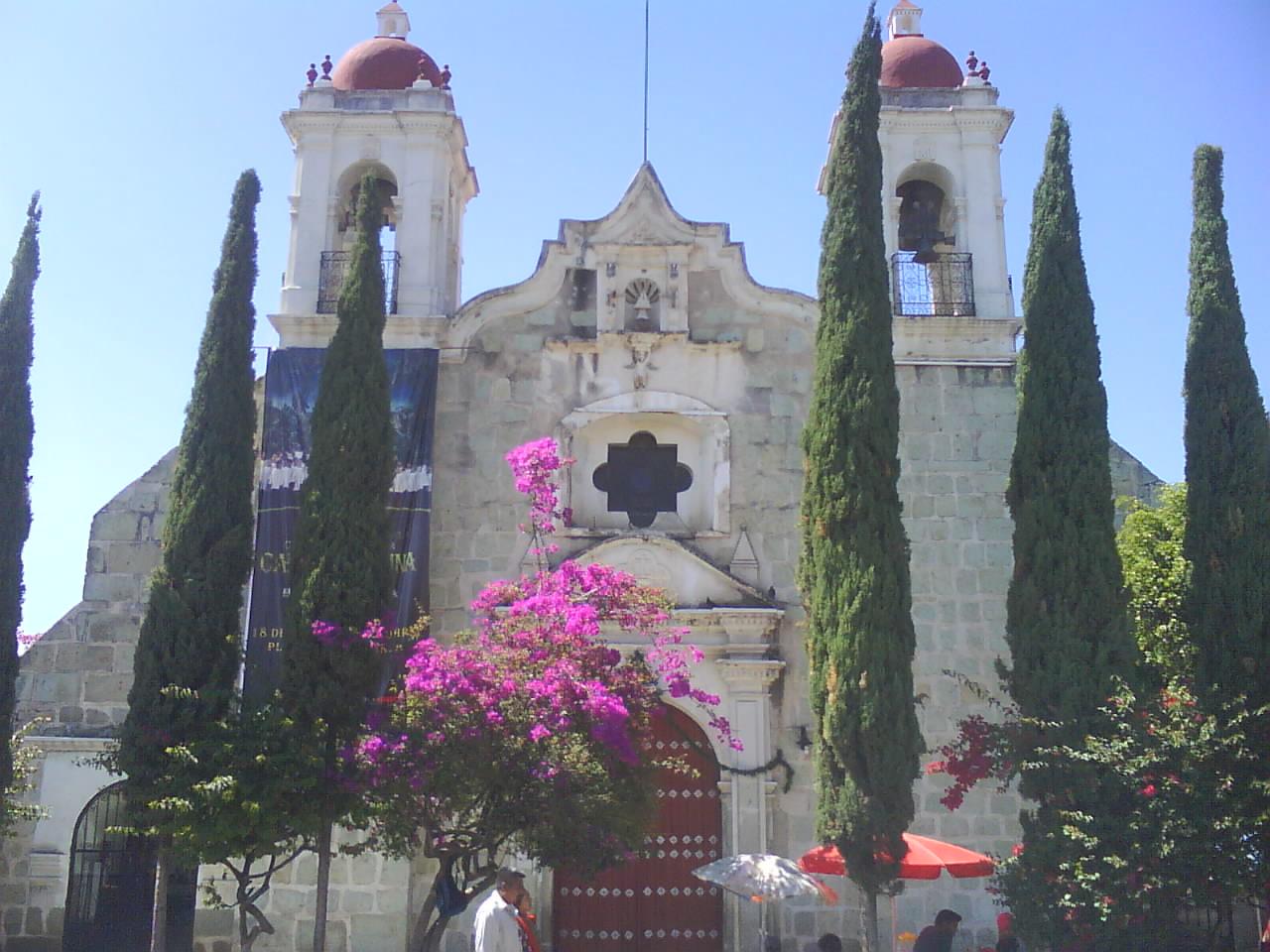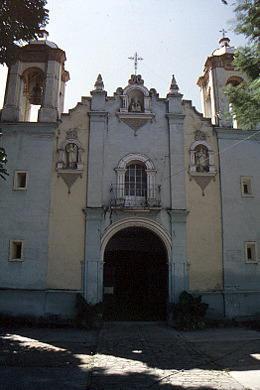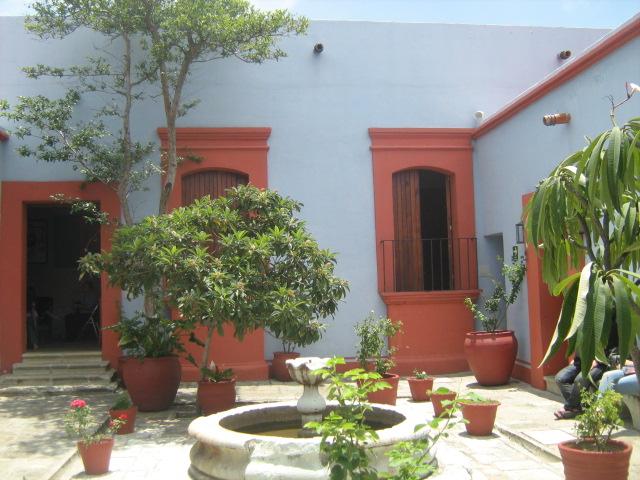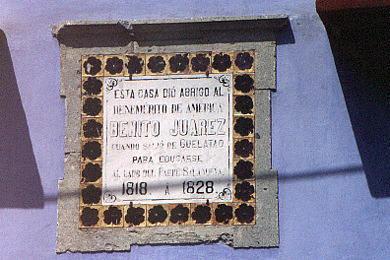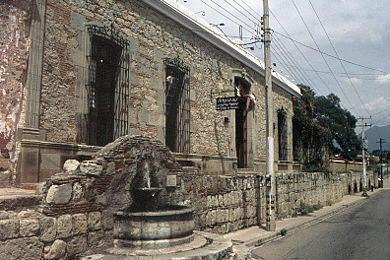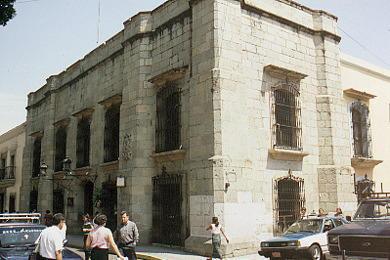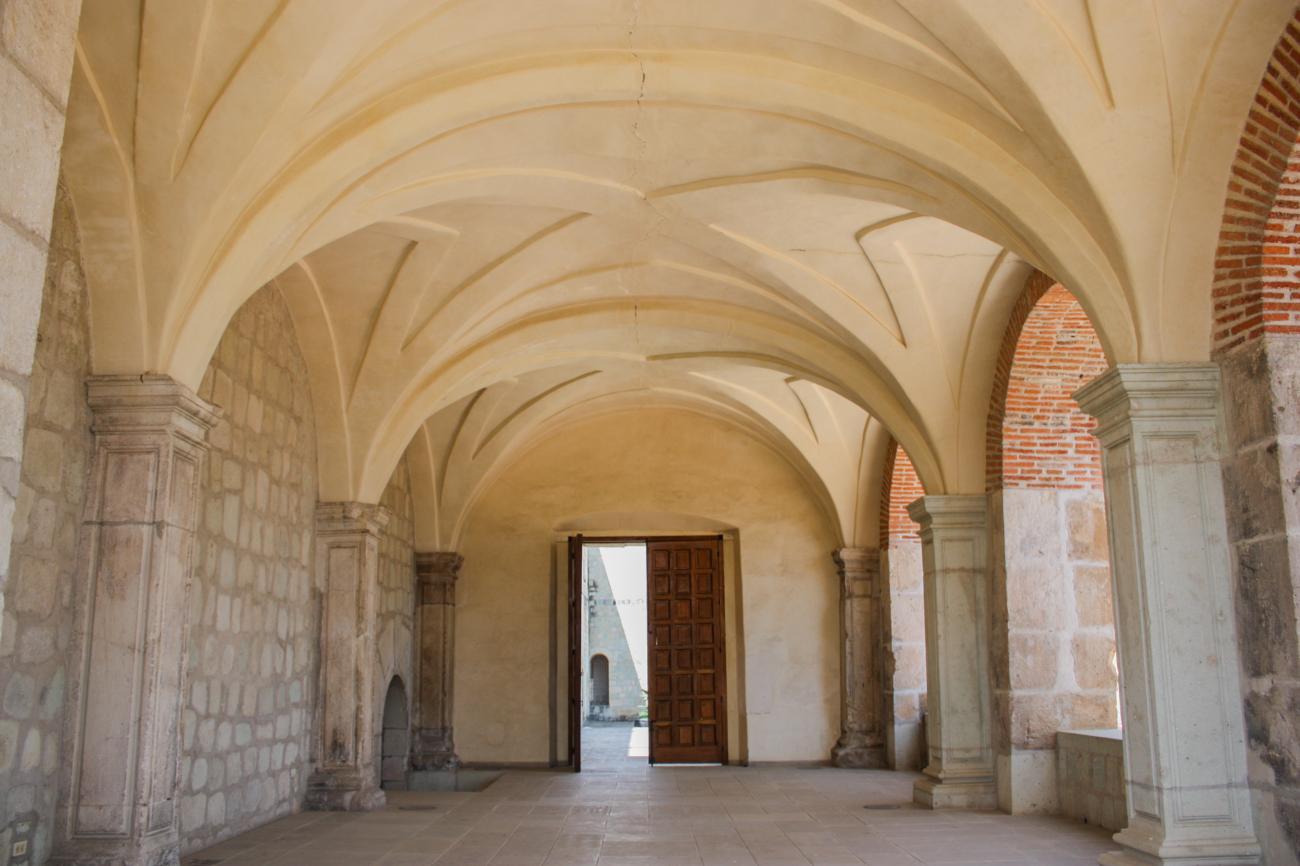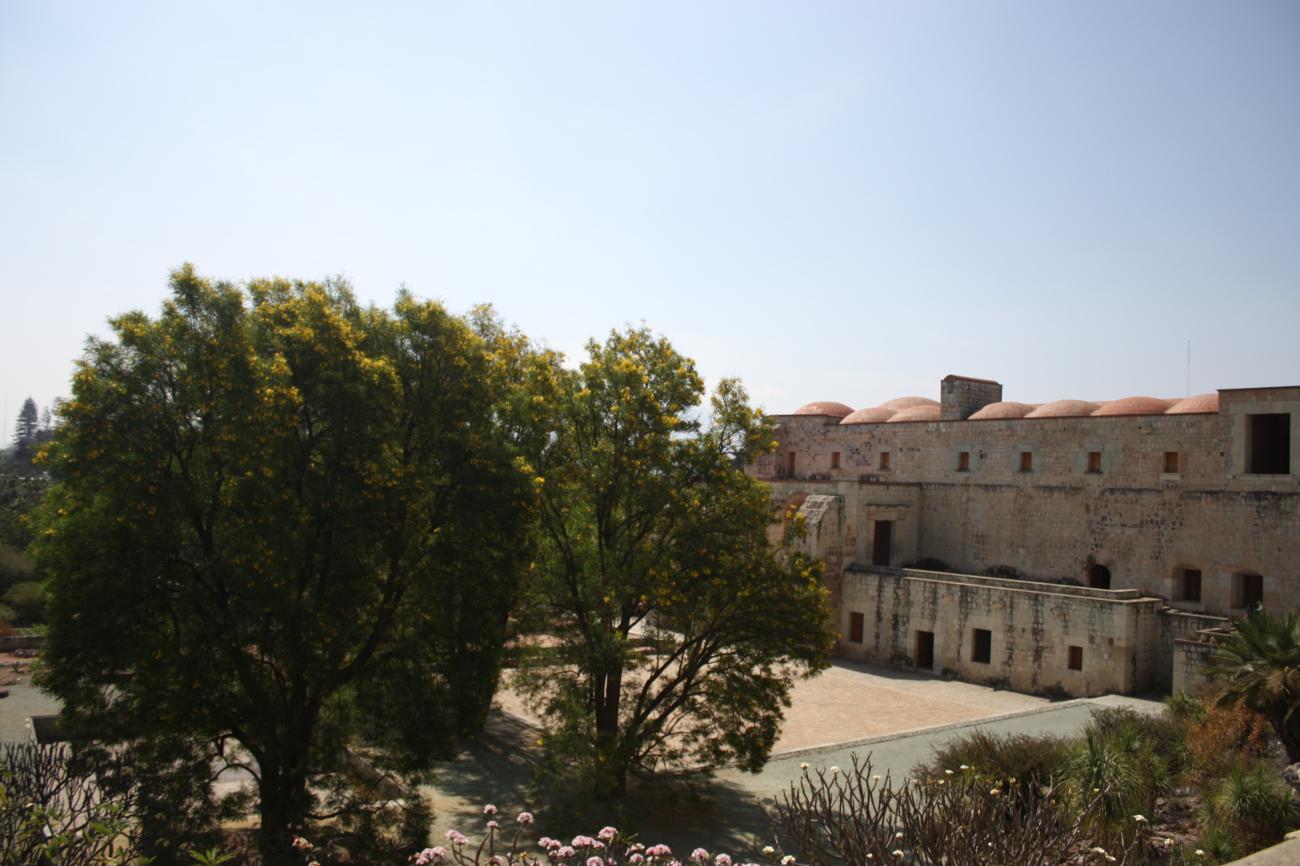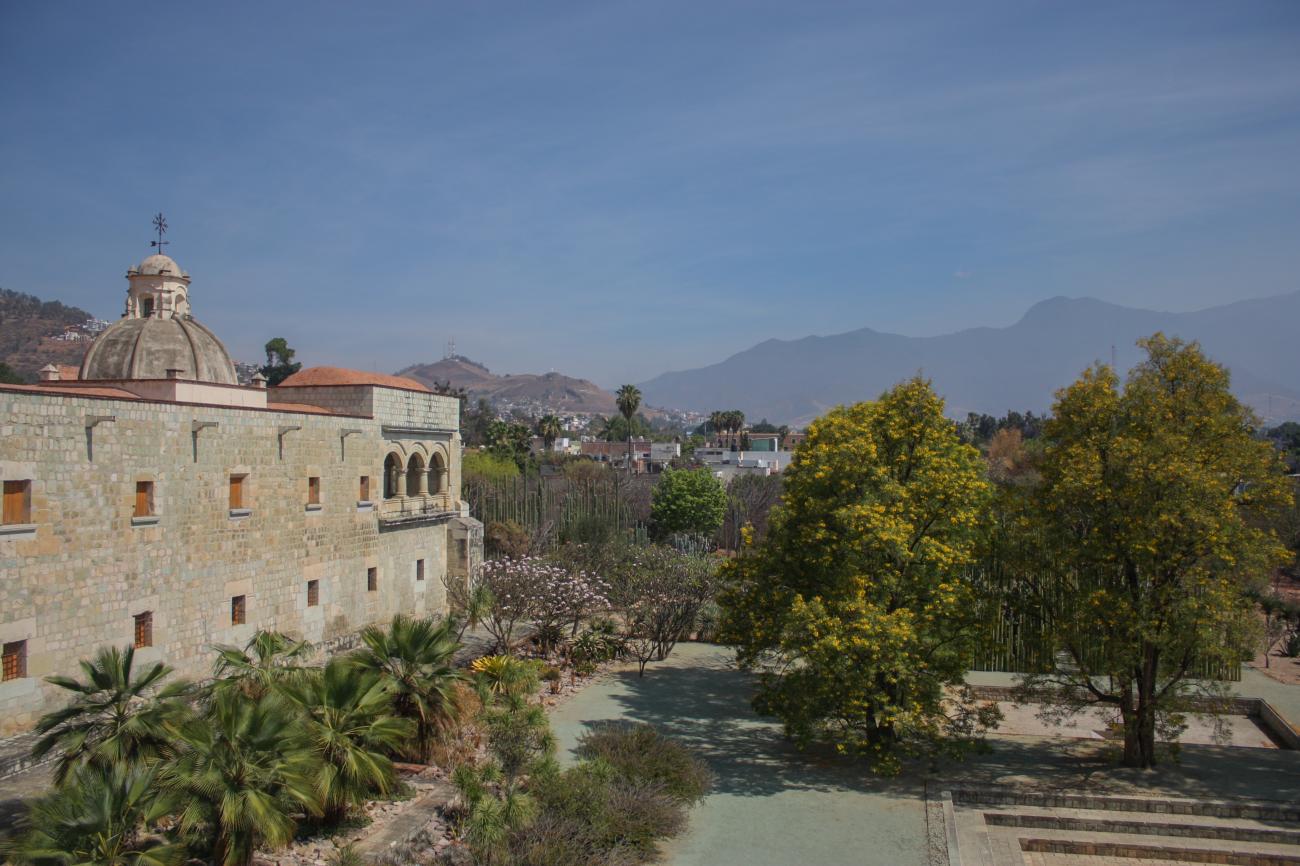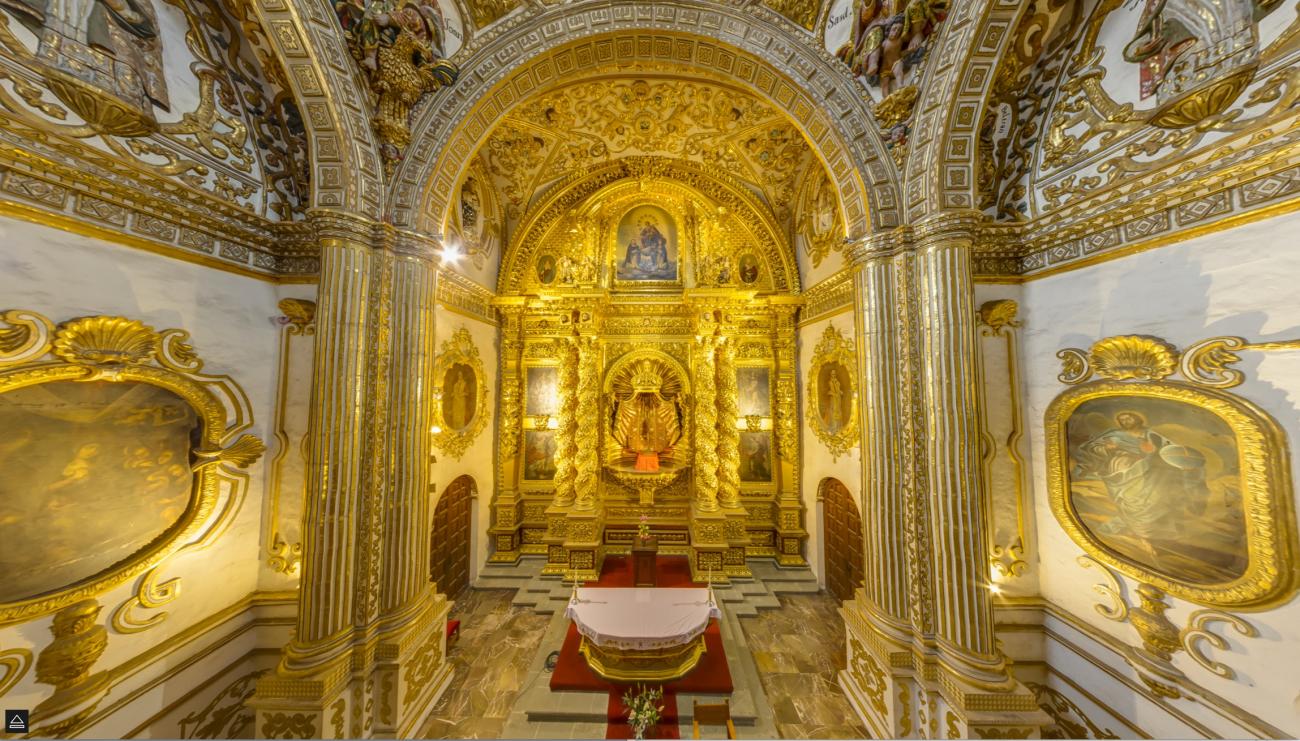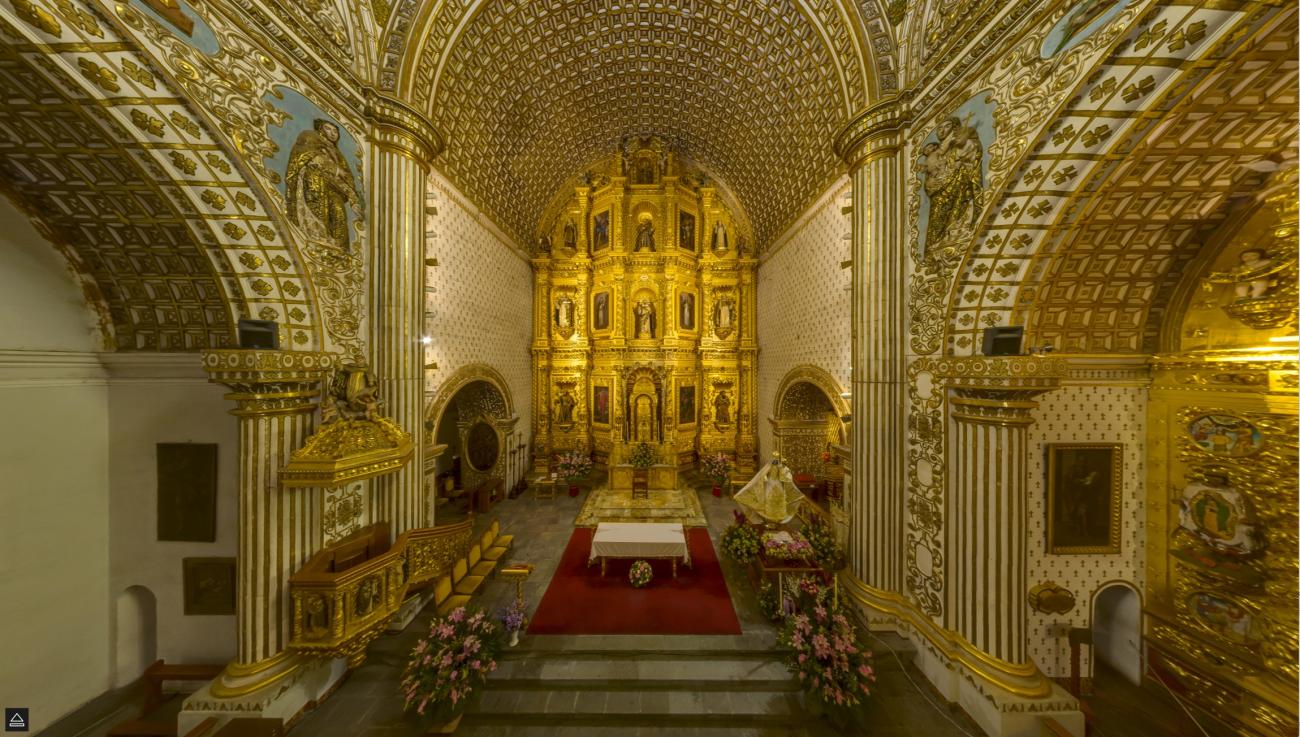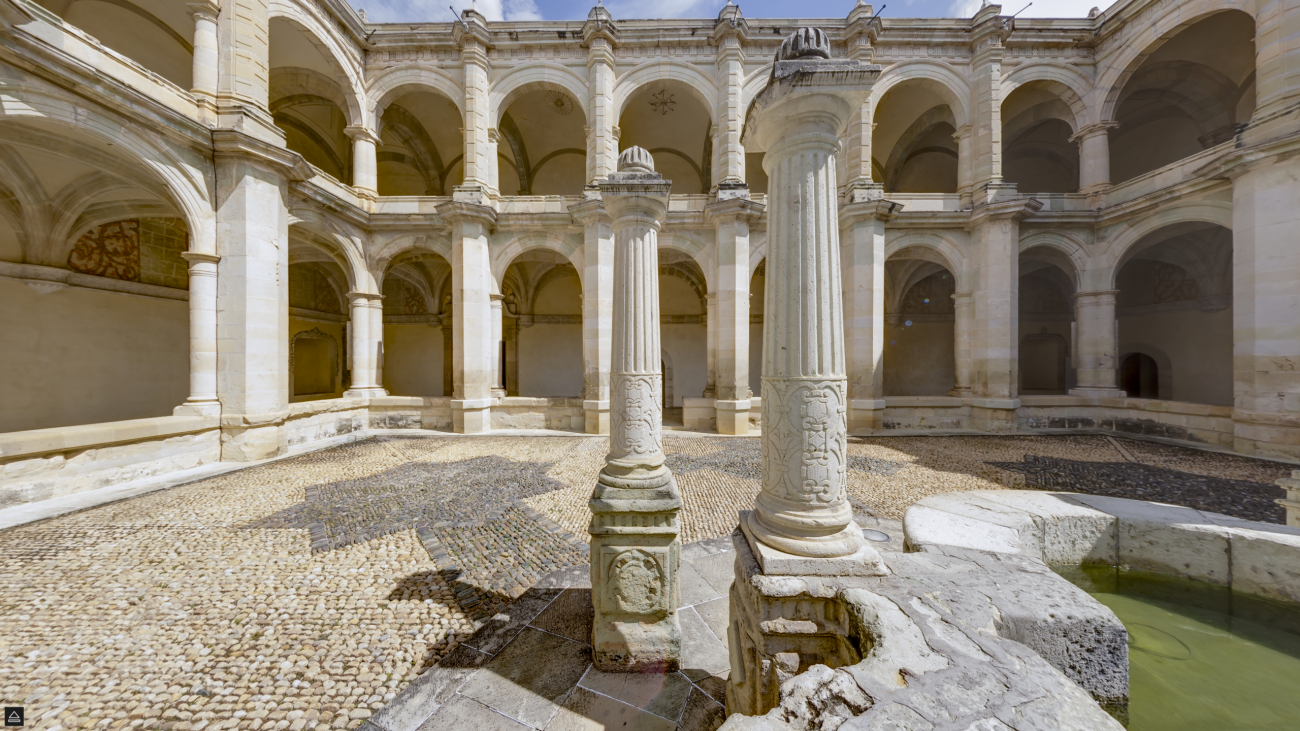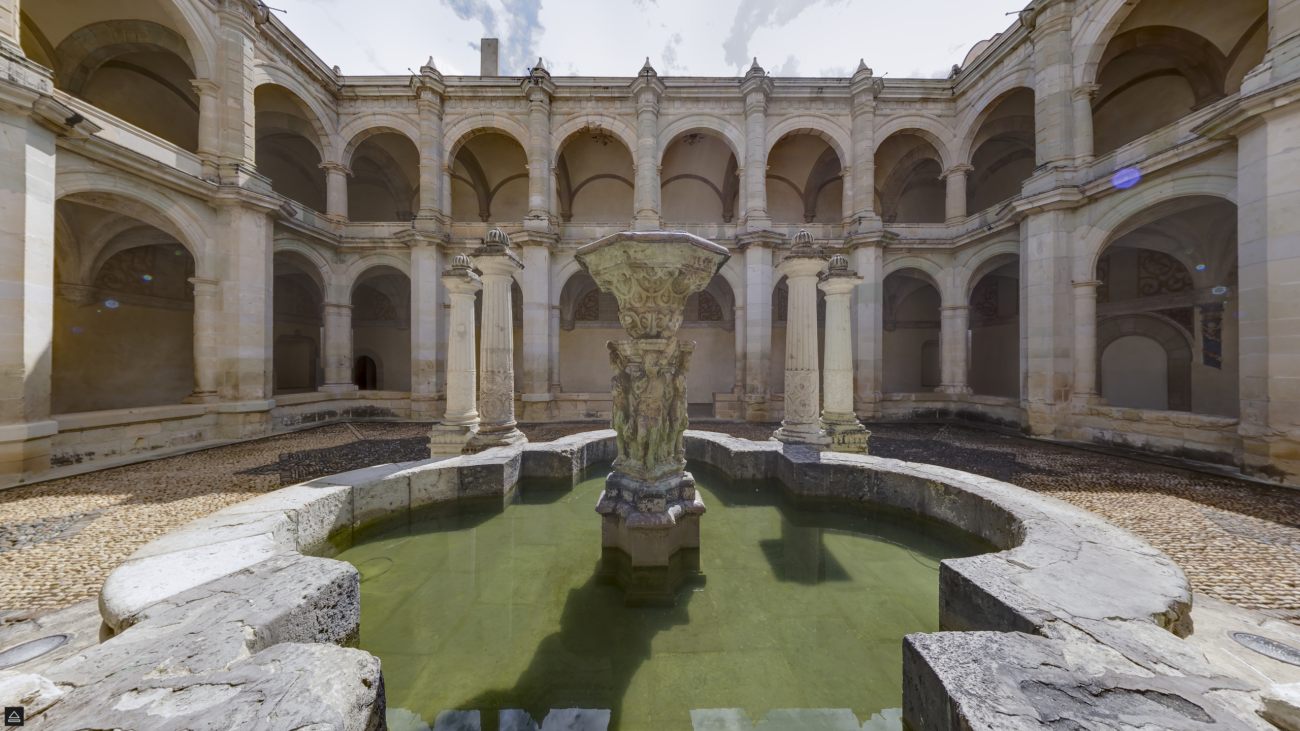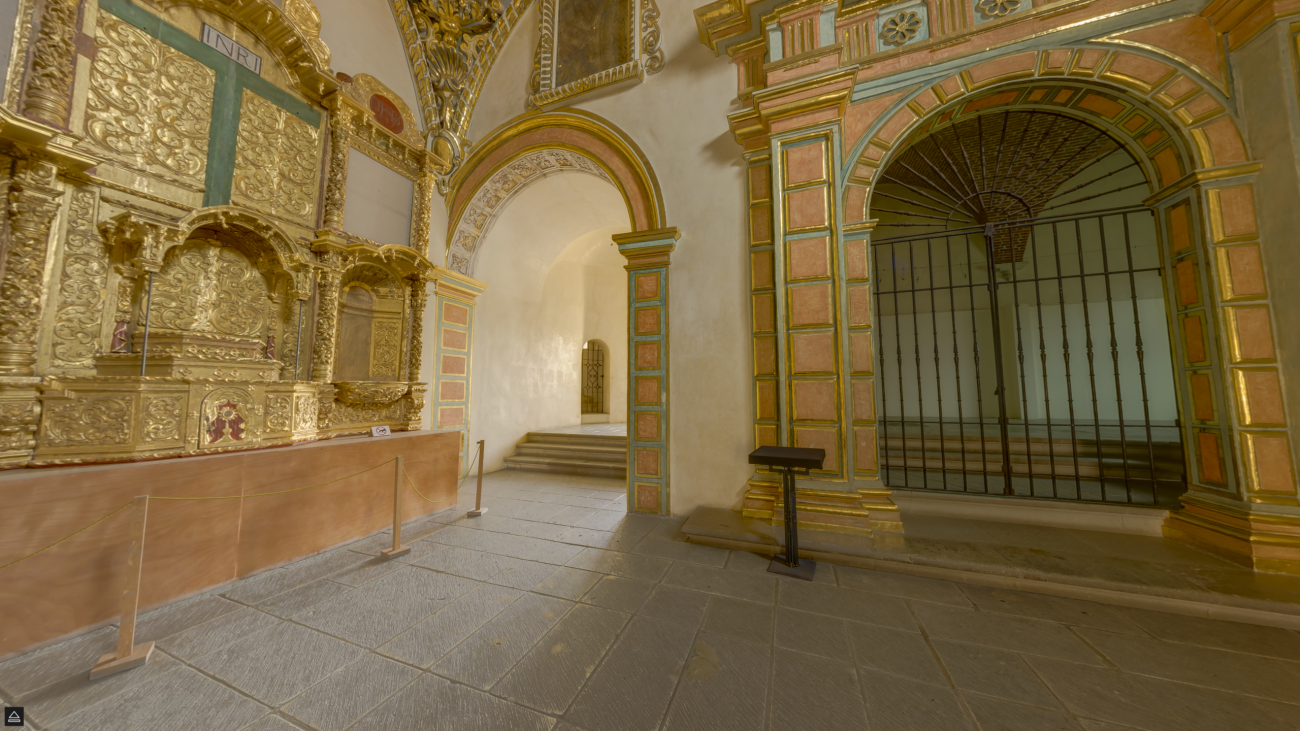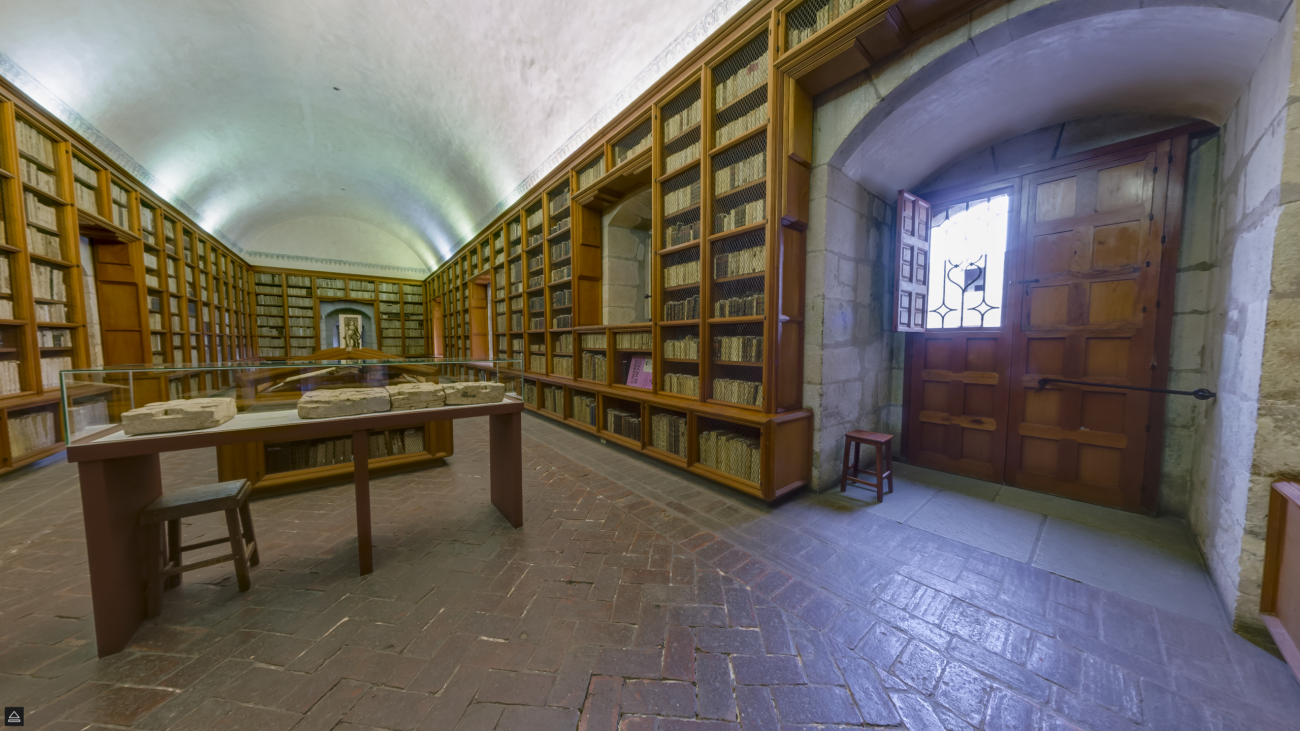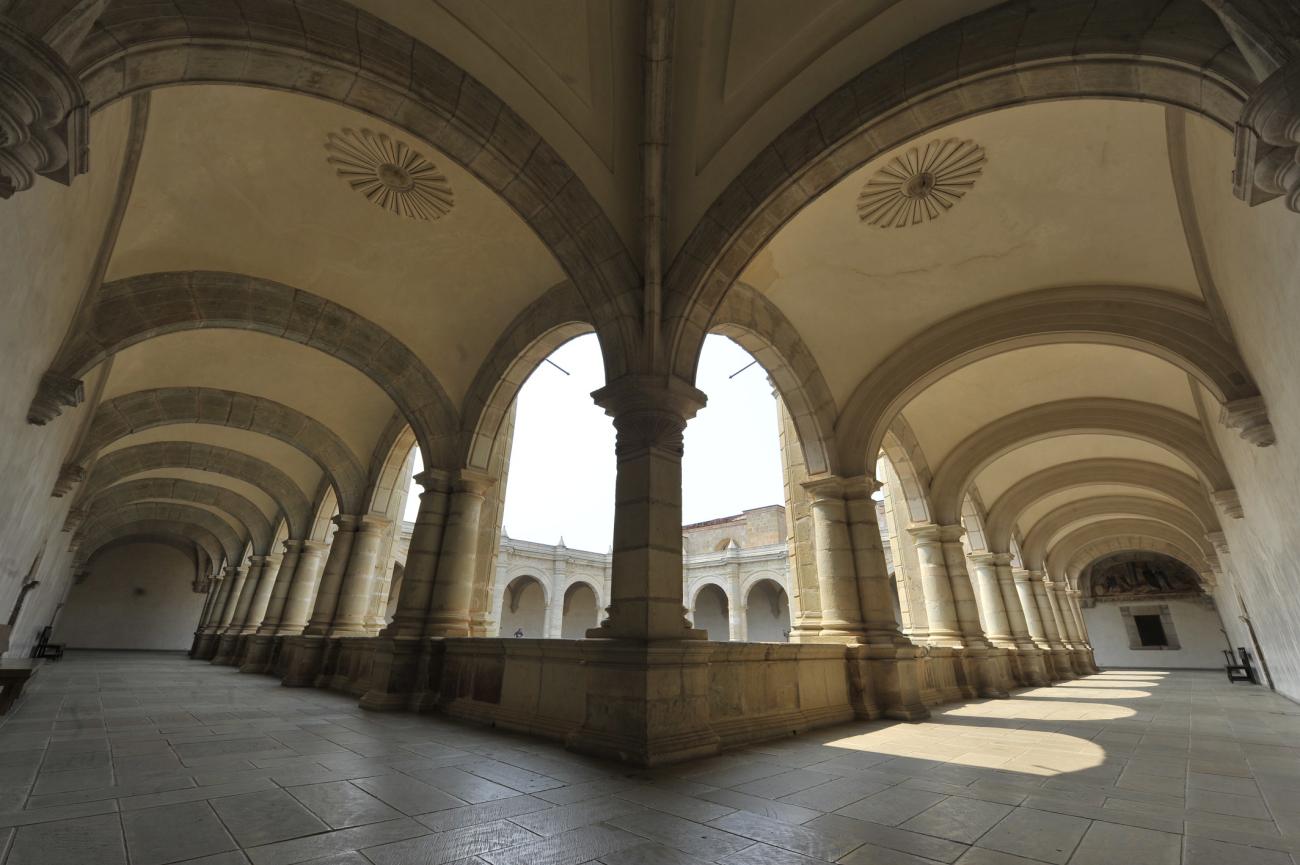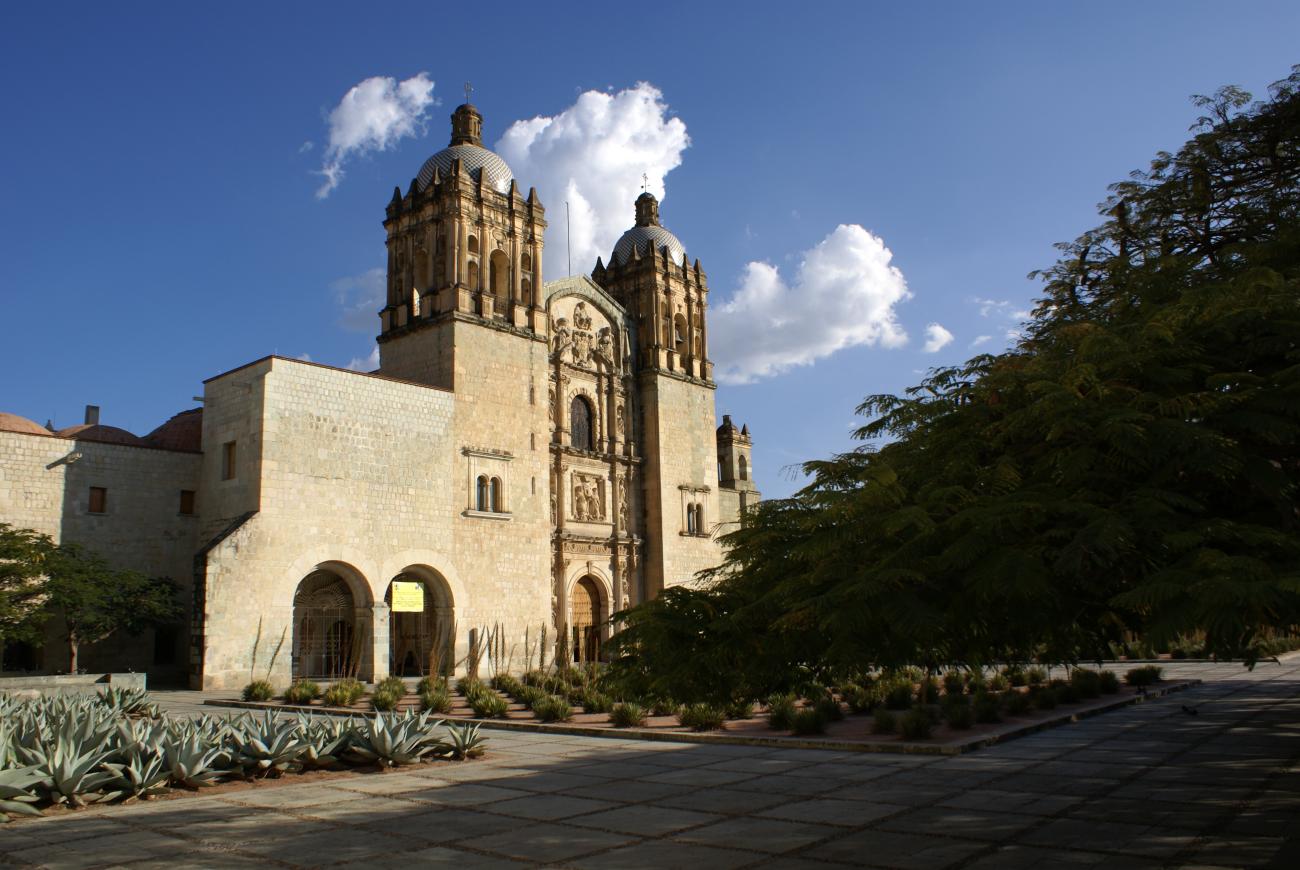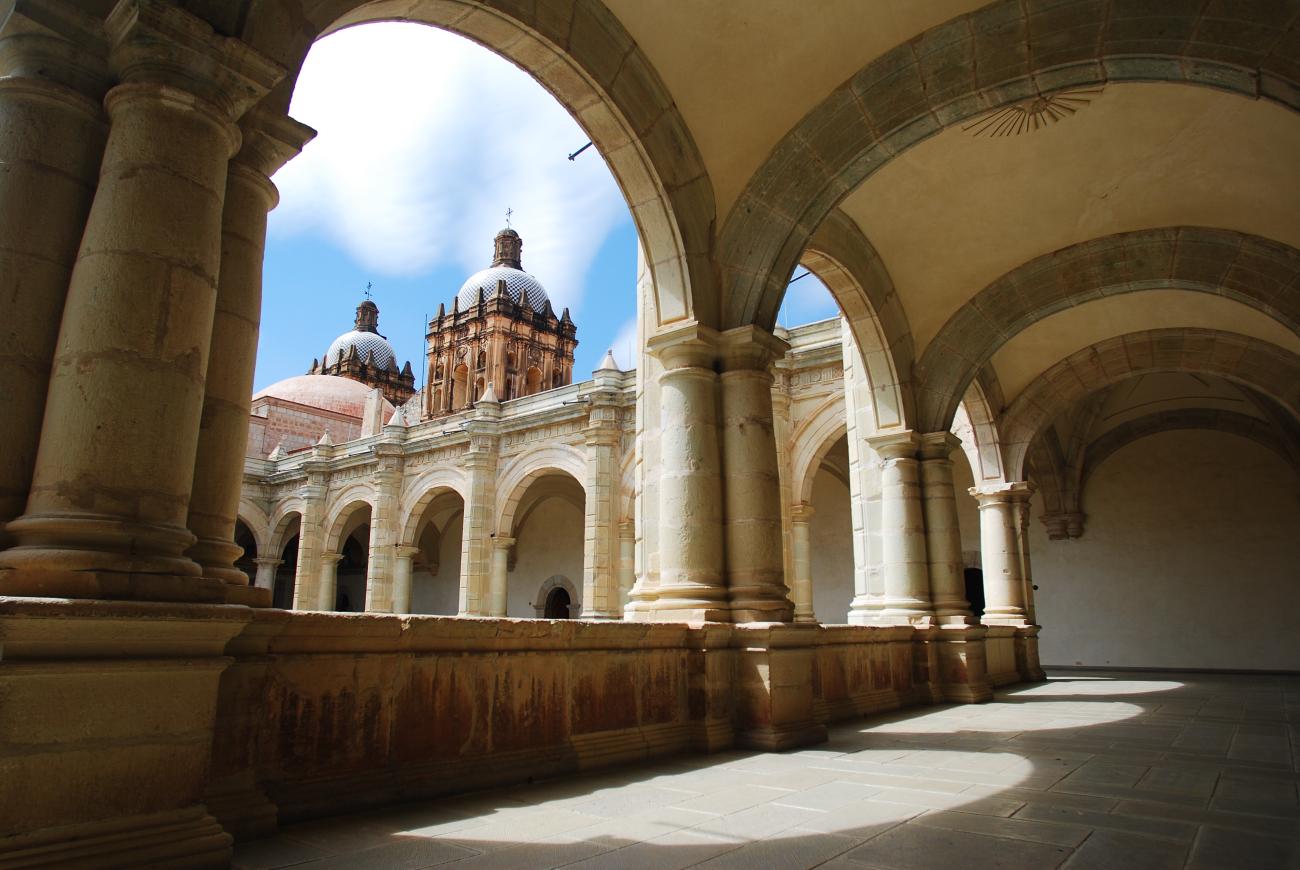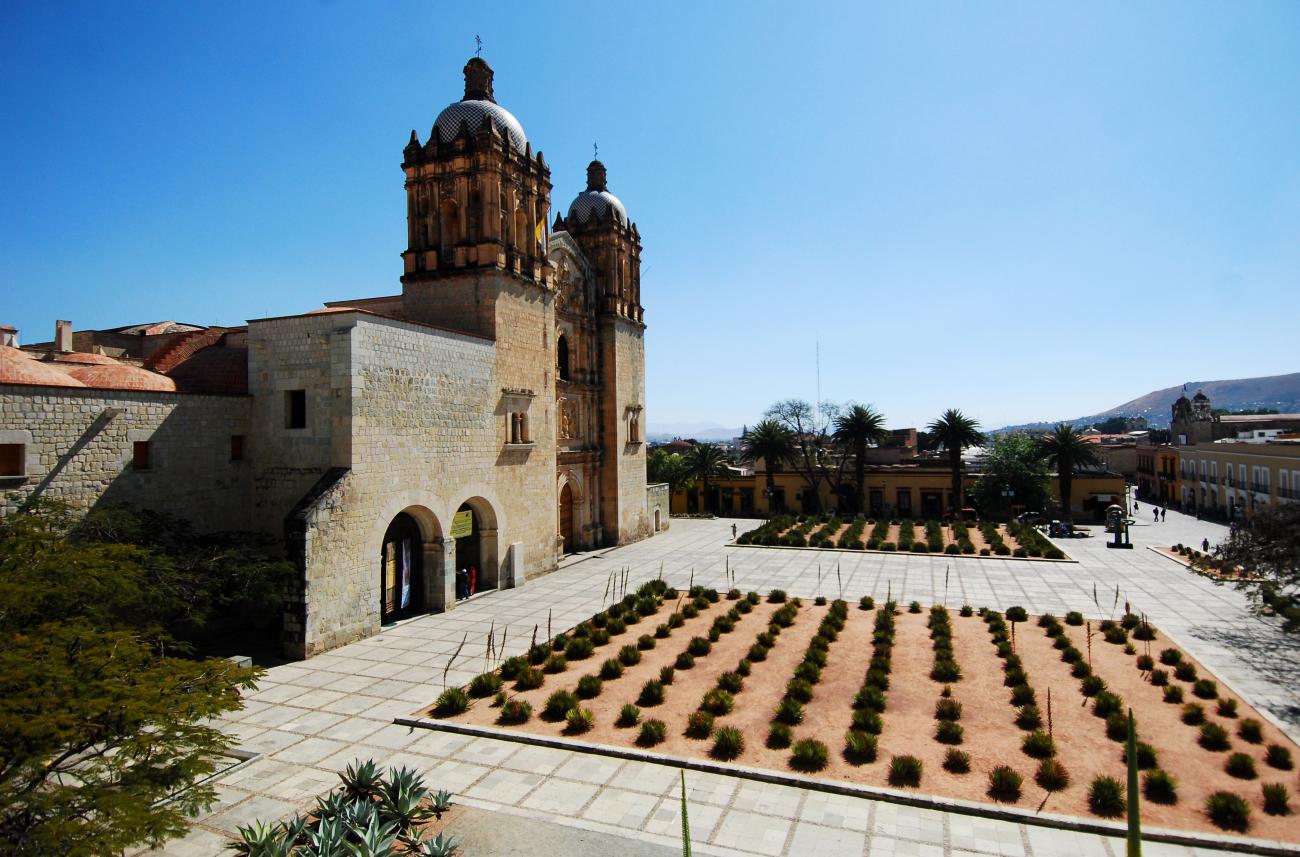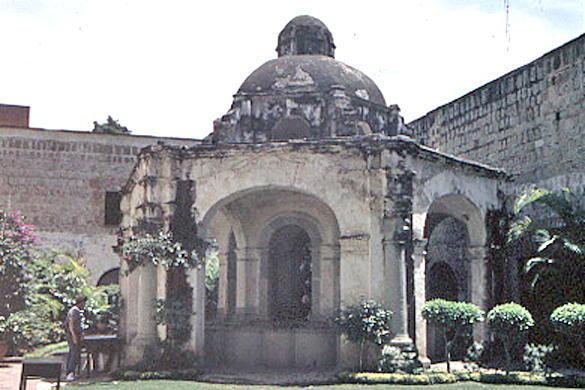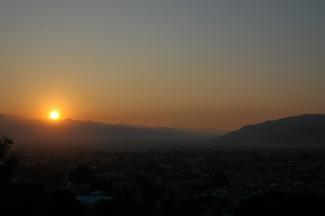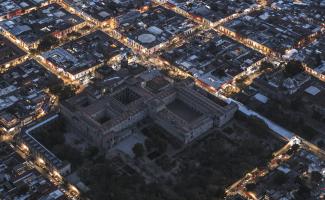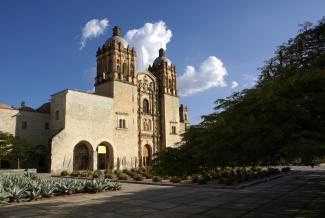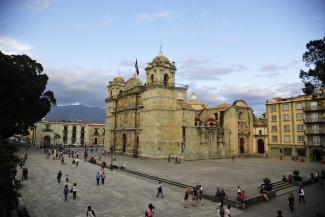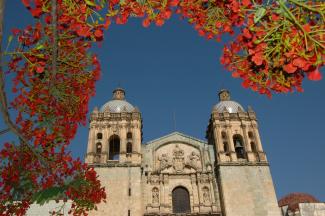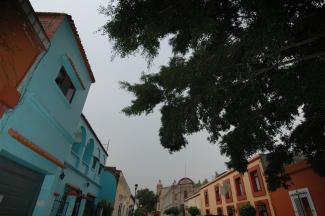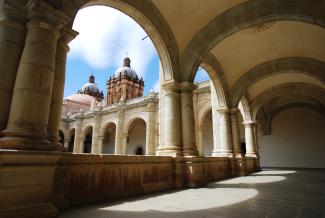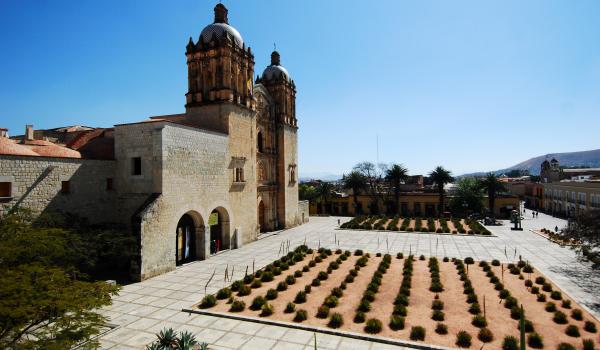Oaxaca
Historical Monuments Zone
Abstract
Located in the Central Valley of the state of the same name, in pre-Hispanic times it was a Mexica military garrison, while in viceregal times it became one of the most important cities in New Spain. It is distinguished as the birthplace of President Benito Juárez, as well as by its beautiful buildings made of green cantera stone, its cuisine, and its traditional festival, the Guelaguetza.
Its name comes from the Nahuatl “huaxyacac” which means “gourds at the tip of the nose.” The city is located in the Central Valleys of the state of Oaxaca, is surrounded by the Sierra Madre and extends to the banks of the Atoyac River.
Its first occupants were early Olmec groups that settled there around 1200 BC. Later, the Zapotec city of Monte Albán flourished, which, in classical times, between 650 and 900 AD, acquired undisputed dominance over the valley. In 1486 the Mexica established the Huaxyacac military garrison in the territory where the city of Oaxaca is now located.
The first Spanish incursions into Oaxacan territory occurred in 1519, the year in which alliances began to be established between the conquistadors and some indigenous dominions. In 1521 Francisco Orozco left the town of Segura de la Frontera, today Tepeaca, Puebla, with a group of Spanish soldiers, Mexica Indians and Tlaxcalans, to settle in Huaxyacac.
Meanwhile, Hernán Cortés and a group of Spaniards settled in the present-day neighborhood of Santa Anita. The conquistador built his house on land where there was previously a pre-Hispanic temple and tried to annex Huaxyacac to his marquisate, but he was unsuccessful.
In 1529 the Spanish authorities realized the importance of this settlement as a strategic site of political, commercial and military control, and as a result they ordered the foundation of the Villa de Antequera. They appointed Juan Peláez de Berrio mayor and ordered him to find the best site for the foundation of the town, as well as to ensure that its streets were laid out in an orderly manner, first designating the positions of the church, the hospital, the town hall, Peláez’s residence and that of the other Spaniards.
In the same year 1529, Dominican friars arrived to take charge of the evangelization of the natives, and began to build the monastery of San Pablo.
In 1532 the Villa de Antequera was granted the title of city and three years later it became the seat of the bishopric of Oaxaca. This made it necessary to build a cathedral. At first, a very austere, provisional church was built, which was completed in 1540. It was not until the beginning of the 18th century that construction of the current cathedral commenced. The Baroque reliefs on its façade made of green cantera stone are a representative element of the city.
Another monument that has become a symbol of Oaxaca is the Santo Domingo Monastery, construction of which began in 1556 and ended in the 18th century. Its church is a jewel of the New Spain Baroque style, and its cloister now houses the Museum of the Cultures of Oaxaca.
The city of Oaxaca has been the scene of historical events such as the taking of the city by José María Morelos y Pavón in November 1812 during the War of Independence.
Once Mexico began its life as an independent country, the name of the city of Antequera was changed to Oaxaca and later, in 1872 it was given the name of Oaxaca de Juárez, because it was in this city that President Benito Juárez began his political life as governor.
During the Porfiriato, the city of Oaxaca was transformed and modernized. The arrival of the Southern Mexico Railroad in 1892 boosted the mining industry in the region, as well as economic and demographic growth.
During the Mexican Revolution, different political factions fought for power in the state, due to the lack of control by the central government. Against this backdrop, in 1915 Oaxaca declared its sovereignty, separating itself from the Mexican federation and the rule of Venustiano Carranza. Oaxaca defended its sovereignty until 1920 when it accepted the Constitution of 1917 and President Álvaro Obregón.
This city is also the birthplace of prominent figures in the history of Mexico such as Porfirio Díaz, who was born here in 1830 and was president of Mexico for more than 30 years; Rufino Tamayo, one of the best-known Mexican painters worldwide, was born here in 1899; and Macedonio Alcalá, a multifaceted musician who composed the famous waltz “Dios nunca muere” (God Never Dies).
Today the city is famous for its cultural wealth, its cuisine, the music of the bands that wind through its streets, as well as for its multiple artistic activities and traditions.
Every year, towards the end of July, the most emblematic celebration of Oaxaca takes place: the Guelaguetza or “Mondays on the Hill Fiesta,” which has pre-Hispanic roots, and brings together displays of different forms of cultural expression from across the state, such as exhibitions, concerts and dances. Other important celebrations are the Day of the Dead and the Night of the Radishes. The latter is a celebration of colonial origin that pays tribute to the harvest of this root vegetable. It is celebrated on December 23 in the main square with the creation of sculptures made with radishes.
The city revolves around the zócalo, at the center of which there is a bandstand with a shape resembling a bunch of balloons. Around this plaza are the buildings that represent civil and religious power: the Municipal Palace and the Cathedral. Its streets are laid out in a grid plan with beautiful colonial buildings.
Oaxaca de Juárez was declared a Zone of Historical Monuments in 1976 and inscribed on the UNESCO World Heritage List in 1987, as the Historic Center of Oaxaca and the Archaeological Zone of Monte Albán. The Zone of Monuments has an extension of 5 km2 with 247 blocks that contain buildings built between the 16th and 19th centuries. The most representative are: the Former Monastery and Church of Santo Domingo de Guzmán, the Municipal Palace, the House of Cortés (current the Museum of Contemporary Art), the Macedonio Alcalá Theater, the Sanctuary of Our Lady of Solitude and the Cathedral of Our Lady of the Assumption. Some of these buildings were built in green cantera stone, which gives the city its characteristic appearance.
Templo de Santo Tomás Xochimilco
This temple has a courtyard of nearly two thousand square meters, partially used as a cemetery. On the façade, there is an image of Saint Thomas, flanked by towers; the southern one is a bell tower.
Templo de Santo Tomás Xochimilco
This temple has a courtyard of nearly two thousand square meters, partially used as a cemetery. On the façade, there is an image of Saint Thomas, flanked by towers; the southern one is a bell tower.
Monumento a Benito Juárez
It was inaugurated on March 21, 1906, to celebrate the first centenary of Benito Juárez's birth; it was the work of the engineer Rodolfo Franco.
Monumento a Benito Juárez
It was inaugurated on March 21, 1906, to celebrate the first centenary of Benito Juárez's birth; it was the work of the engineer Rodolfo Franco.
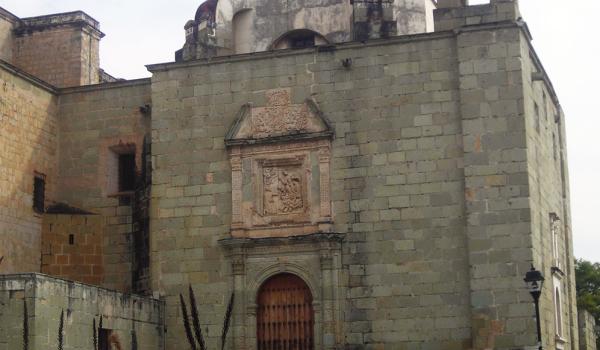
Capilla de la Virgen del Rosario
This chapel was inaugurated on May 5, 1731, after seven years of construction. It features plaster decorations created between 1724 and 1731, depicting the joyful, sorrowful, and glorious mysteries.
Capilla de la Virgen del Rosario
This chapel was inaugurated on May 5, 1731, after seven years of construction. It features plaster decorations created between 1724 and 1731, depicting the joyful, sorrowful, and glorious mysteries.
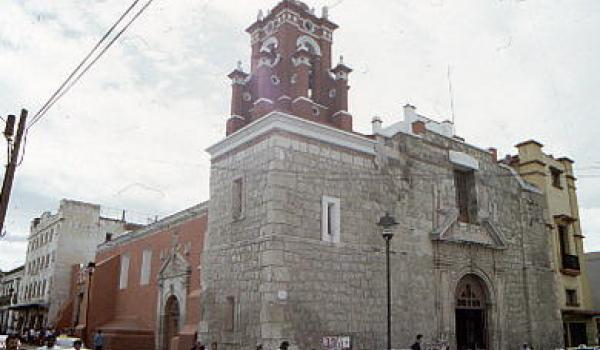
Templo de San Juan de Dios
On this site stood the first Christian chapel, dedicated to Saint Catherine the Martyr. From 1535 to 1544, it was the first cathedral of Oaxaca. It was destroyed by an earthquake in 1662.
Templo de San Juan de Dios
On this site stood the first Christian chapel, dedicated to Saint Catherine the Martyr. From 1535 to 1544, it was the first cathedral of Oaxaca. It was destroyed by an earthquake in 1662.
In 1698, the site was handed over to the Friars of Saint John of God (Juaninos), and construction of the new church began. In 1700, the construction of the convent commenced, including infirmaries, residences, and hospital offices, as well as a recreational orchard.
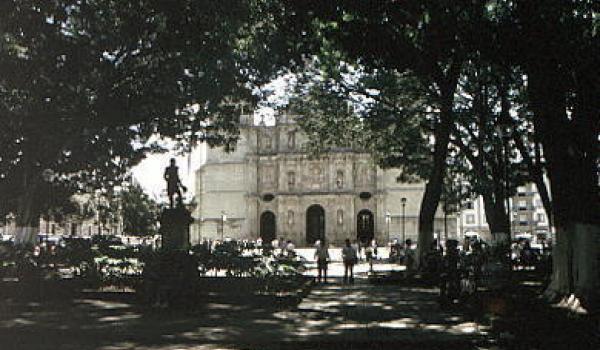
Jardín Alameda
This is one of the plots granted by Viceroy Martín Enríquez in 1576 for the construction of town hall buildings or the municipal palace. Over time, it became a pottery market and was known as the Plazuela de Cántaros.
Jardín Alameda
This is one of the plots granted by Viceroy Martín Enríquez in 1576 for the construction of town hall buildings or the municipal palace. Over time, it became a pottery market and was known as the Plazuela de Cántaros. Governor Antonio de León initiated the transformation of the square into a garden, which was inaugurated on October 13, 1843, and named Alameda de León. On September 8, 1885, a statue of General Antonio de León was unveiled.
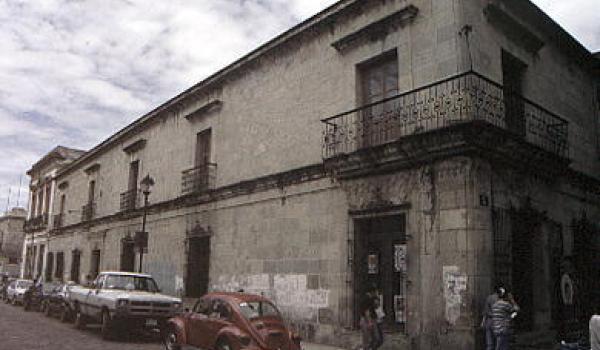
Hotel Monte Albán
This 17th-century building was inhabited by the family of José Gregorio de Ortigoza, Bishop of Antequera in 1775.
Hotel Monte Albán
This 17th-century building was inhabited by the family of José Gregorio de Ortigoza, Bishop of Antequera in 1775. At the end of the 20th century, it was sold and has passed through several owners; it has been used as a hotel, known as 'Hotel Nacional,' 'Hotel Alameda,' and, finally, since 1951, 'Hotel Monte Albán.' The restoration of the façade and the main courtyard to adapt it as a hotel was carried out by Alfonso Canseco Feraud.

Servicio Postal Mexicano
This 19th-century building was once inhabited by Bishop Vicente Márquez. In 1888, it was acquired by Archbishop Gillow, who remodeled it in a neoclassical style.
Servicio Postal Mexicano
This 19th-century building was once inhabited by Bishop Vicente Márquez. In 1888, it was acquired by Archbishop Gillow, who remodeled it in a neoclassical style. It was designated as the Archbishop's Palace, with a library of over four thousand volumes and a gallery with portraits of diocesan figures. It currently houses the offices of the Postal and Telegraph Services.
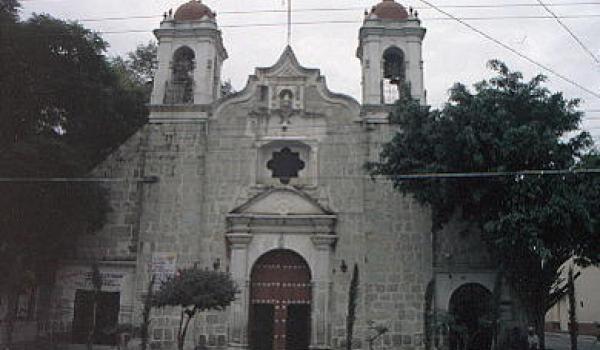
Templo de la Consolación
This 19th-century building was once inhabited by Bishop Vicente Márquez. In 1888, it was acquired by Archbishop Gillow, who remodeled it in a neoclassical style.
Templo de la Consolación
This 19th-century building was once inhabited by Bishop Vicente Márquez. In 1888, it was acquired by Archbishop Gillow, who remodeled it in a neoclassical style. It was designated as the Episcopal Palace, with a library of over four thousand volumes and a gallery with portraits of diocesan figures. It currently serves as the headquarters for the Postal and Telegraph Office.

Templo de la Trinidad de las Huertas
In 1554, the first chapel was built at this site, with adobe walls and a gabled roof of tiles and wood. After the earthquake of 1928, it was partially destroyed, and the reconstruction began that same year.
Templo de la Trinidad de las Huertas
In 1554, the first chapel was built at this site, with adobe walls and a gabled roof of tiles and wood. After the earthquake of 1928, it was partially destroyed, and the reconstruction began that same year. The church is laid out in the shape of a Latin cross with two bell towers at the front; at the center of the façade is a sculpture of the Trinity, flanked by angels.

Museo Benito Juárez
This 18th-century building belonged to Antonio Salanueva, a friar of the Third Order of Saint Francis, who housed Benito Juárez from 1818 to 1828. The state government acquired the building to convert it into a museum and preserve its belongings. The museum opened its doors in 1933.
Museo Benito Juárez
This 18th-century building belonged to Antonio Salanueva, a friar of the Third Order of Saint Francis, who housed Benito Juárez from 1818 to 1828. The state government acquired the building to convert it into a museum and preserve its belongings. The museum opened its doors in 1933.
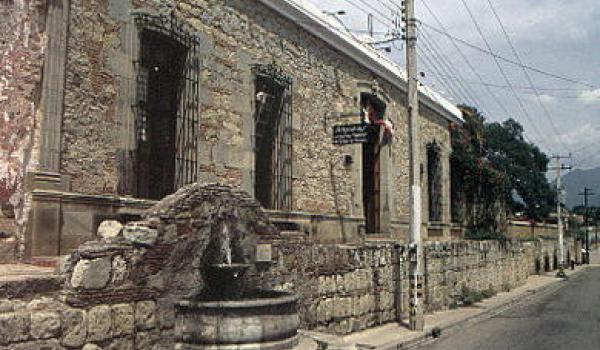
Acueducto
18th-century construction
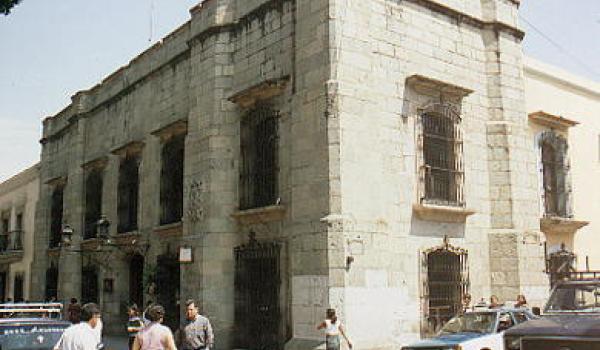
Secretaría de Turismo
This 18th-century building served as a girls' school, a museum, and the City Hall before being acquired by SECTUR in December 1992.
Secretaría de Turismo
This 18th-century building served as a girls' school, a museum, and the City Hall before being acquired by SECTUR in December 1992.

Teatro Macedonio Alcalá
The building was constructed between 1904 and 1909; it was originally named 'Luis Mier y Terán,' later receiving the name 'Jesús Carranza,' and it wasn't until 1933 that it was named 'Macedonio Alcalá.' It was decorated and painted by artists such as Albino Mendoza, José Cabrera, Trinidad Galván,
n>
Teatro Macedonio Alcalá
The building was constructed between 1904 and 1909; it was originally named 'Luis Mier y Terán,' later receiving the name 'Jesús Carranza,' and it wasn't until 1933 that it was named 'Macedonio Alcalá.' It was decorated and painted by artists such as Albino Mendoza, José Cabrera, Trinidad Galván, and the Tarazona brothers.
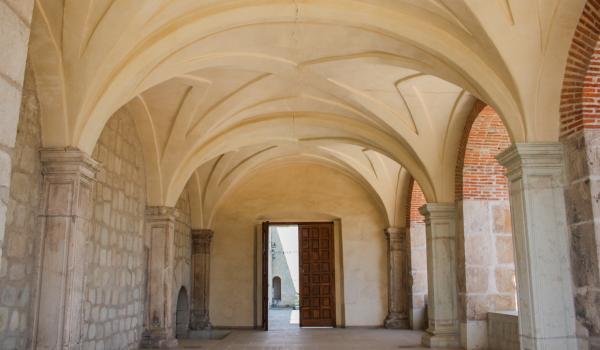
Templo y Ex Convento de Santo Domingo de Guzmán
The construction of this convent complex began around 1557. The work was supervised by the friars Hernando Cavarcos, Toribio Alcaraz, and Justo Alcántara.
Templo y Ex Convento de Santo Domingo de Guzmán
The construction of this convent complex began around 1557. The work was supervised by the friars Hernando Cavarcos, Toribio Alcaraz, and Justo Alcántara.

Lavaderos
This 17th-century building is an octagonal structure covered with a dome and equipped with an ingenious hydraulic system. Water flows into the central basin and is then distributed to the various earthenware basins.
Lavaderos
This 17th-century building is an octagonal structure covered with a dome and equipped with an ingenious hydraulic system. Water flows into the central basin and is then distributed to the various earthenware basins.




